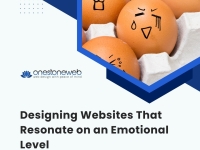



In an era dominated by the digital landscape, where countless websites vie for attention, the difference between a visitor staying or leaving could hinge on that all-important emotional connection. The burgeoning field of emotional design seeks to weave this connection into the very fabric of websites, turning casual browsers into loyal customers and avid fans. This comprehensive exploration delves deep into how web design can transcend the purely functional to engage users emotionally, creating experiences that are not just seen and used, but felt and remembered.
Emotional connection in web design is a holistic approach that combines various design elements and strategies with the psychological underpinnings of emotional response. It's about crafting experiences that resonate on a personal level, leveraging colors, imagery, storytelling, interactivity, and more to evoke specific feelings and attachments in the site's visitors.
At its core, creating an emotional connection through web design is about forging a deeper relationship between the brand and its audience, going beyond the transactional to touch upon the emotional drivers that influence decision-making.
Human decision-making is not solely governed by logic and reason; emotions play a pivotal role. According to the "Triune Brain" theory, the brain consists of three parts: the rational brain, the emotional brain, and the instinctual brain. For web designers, tapping into the emotional brain is paramount, as it can guide the rational brain, influencing perceptions, judgments, and actions.
Emotions also enhance memorability. Positive emotional experiences on a website can lead to stronger memories and associations with a brand, increasing the chances of return visits and loyalty.
Colors wield a powerful influence over our emotions and behaviors. Choosing the right color palette for your website can evoke the desired emotional response aligned with your brand's identity and messaging. For instance, blue can communicate trust and security, while yellow might evoke optimism and cheerfulness.
Pictures speak louder than words, and human faces, in particular, can convey emotions that visitors can empathize with. Including authentic, relatable images of people on your website can humanize your brand and foster a sense of connection.
Narratives have the power to engage and move audiences on an emotional level. Effective storytelling on your website - through the combination of text, visuals, and multimedia - can take visitors on a journey, making the brand experience memorable and emotionally charged.
Interactive design elements like animations, transitions, and micro-interactions can surprise and delight users, creating moments of joy and engagement. When designed thoughtfully, these elements can deepen the emotional connection by providing a sense of agency and participation.
Designing for accessibility is not just about compliance; it's an expression of empathy. Ensuring your website is accessible to users of all abilities demonstrates care and inclusivity, fostering positive emotional responses from a broader audience.
In today's digital landscape, consumers crave authenticity. Transparent communication about your brand's values, processes, and stories can build trust and loyalty, strengthening the emotional bond with your audience.
The journey to creating an emotionally engaging website transcends mere aesthetics, requiring a deep understanding of your audience and the thoughtful integration of design elements that resonate on a human level. By incorporating strategies that foster emotional connections, designers can elevate the user experience, transforming passive visitors into engaged, loyal advocates for the brand.
In the final reckoning, the most successful websites are those that not only meet functional needs but also speak to the heart. As web design continues to evolve, the emphasis on emotional design underscores the shift towards creating more human-centric, empathetic digital experiences—a testament to the power of design not just to inform and facilitate but to connect and inspire.
